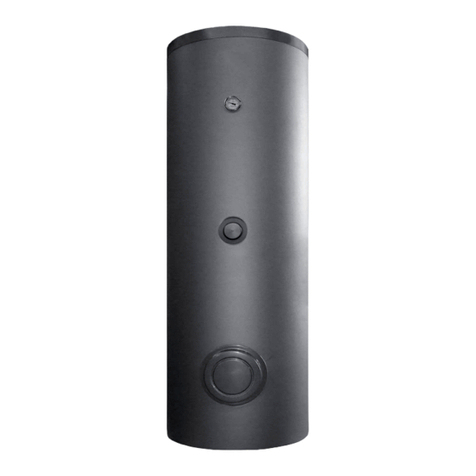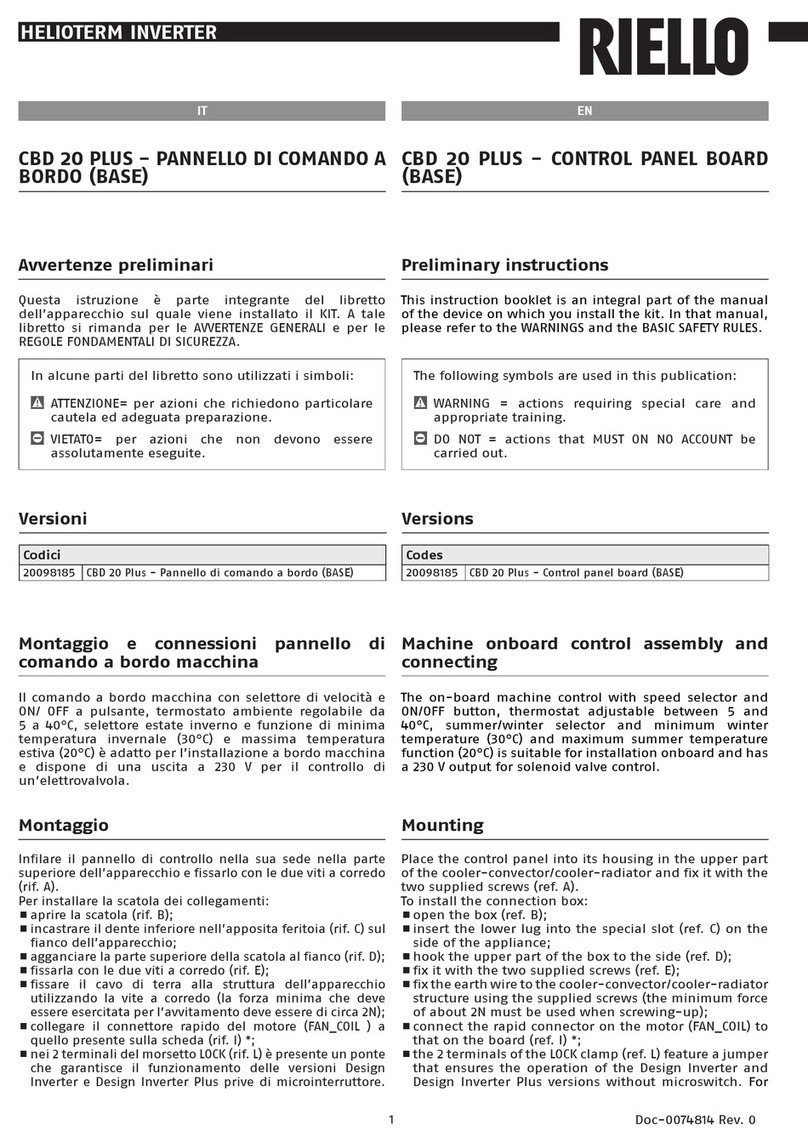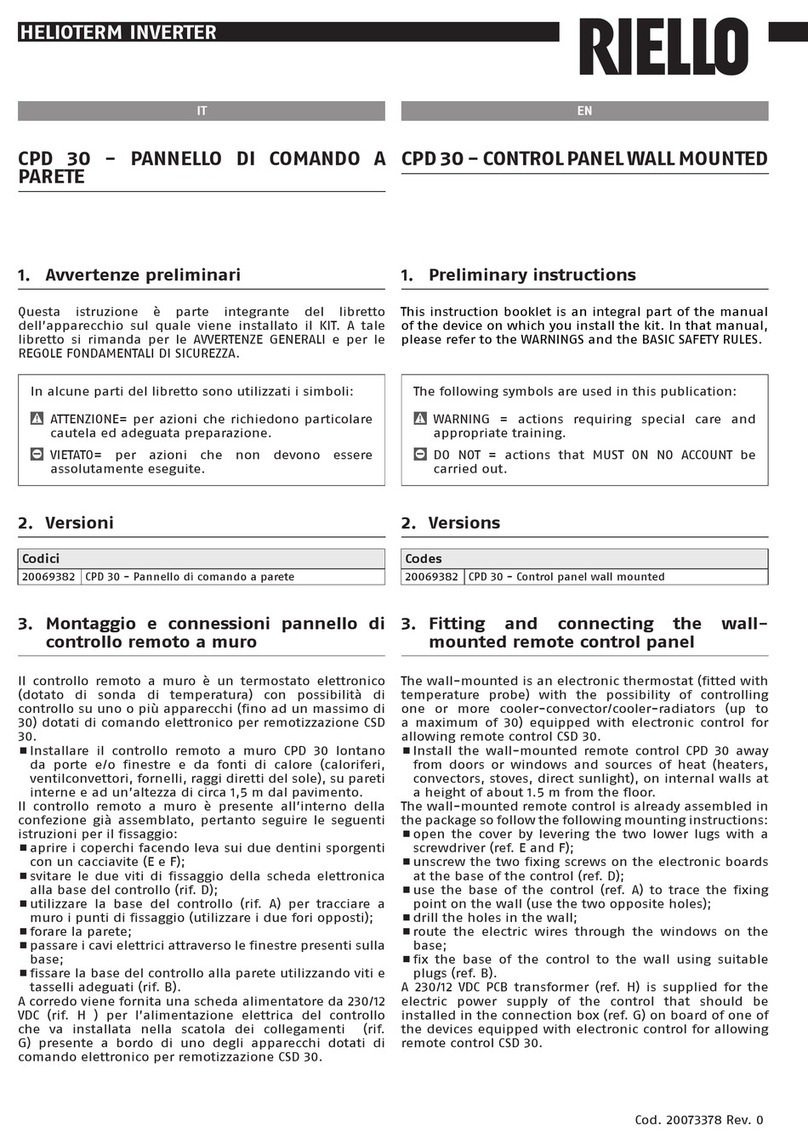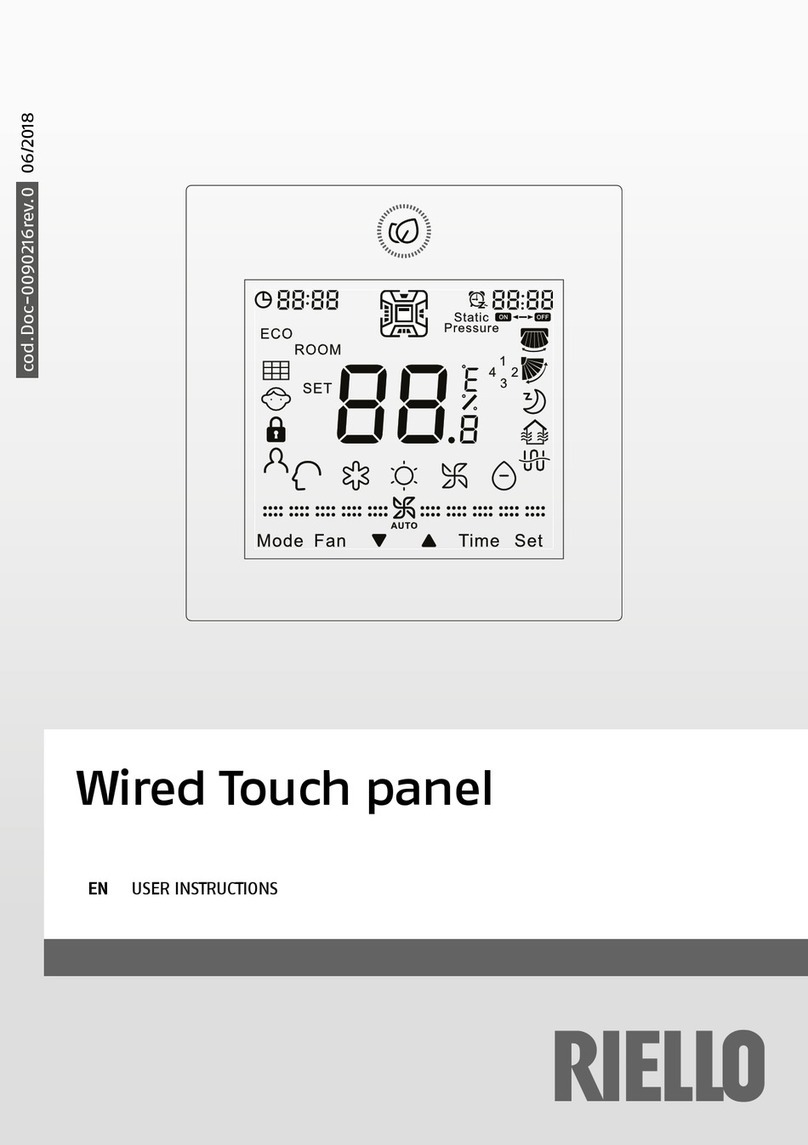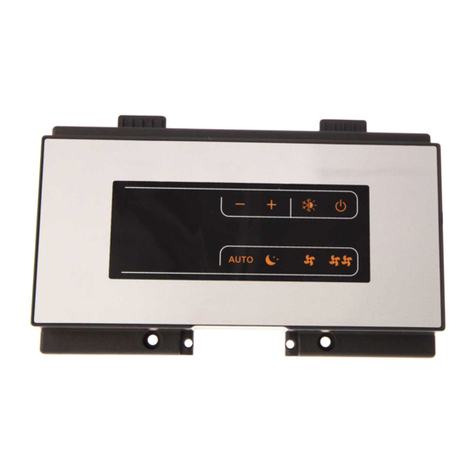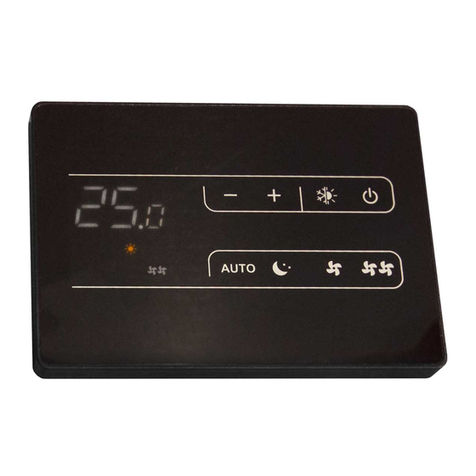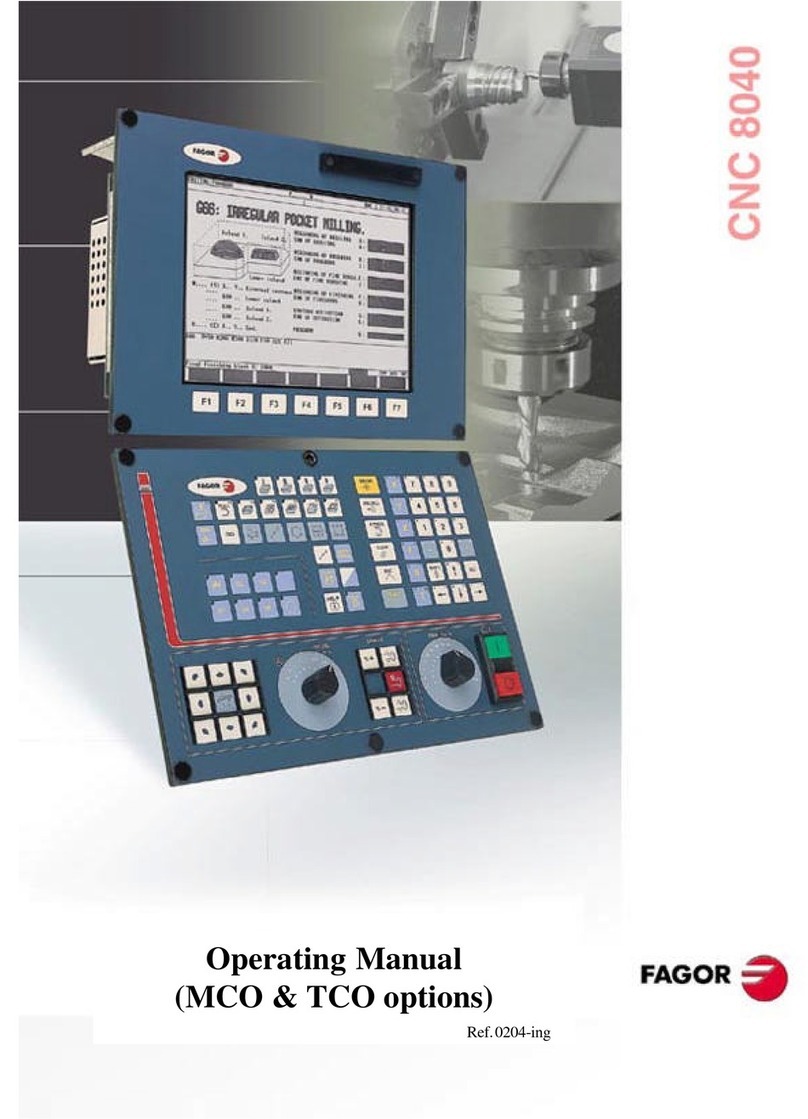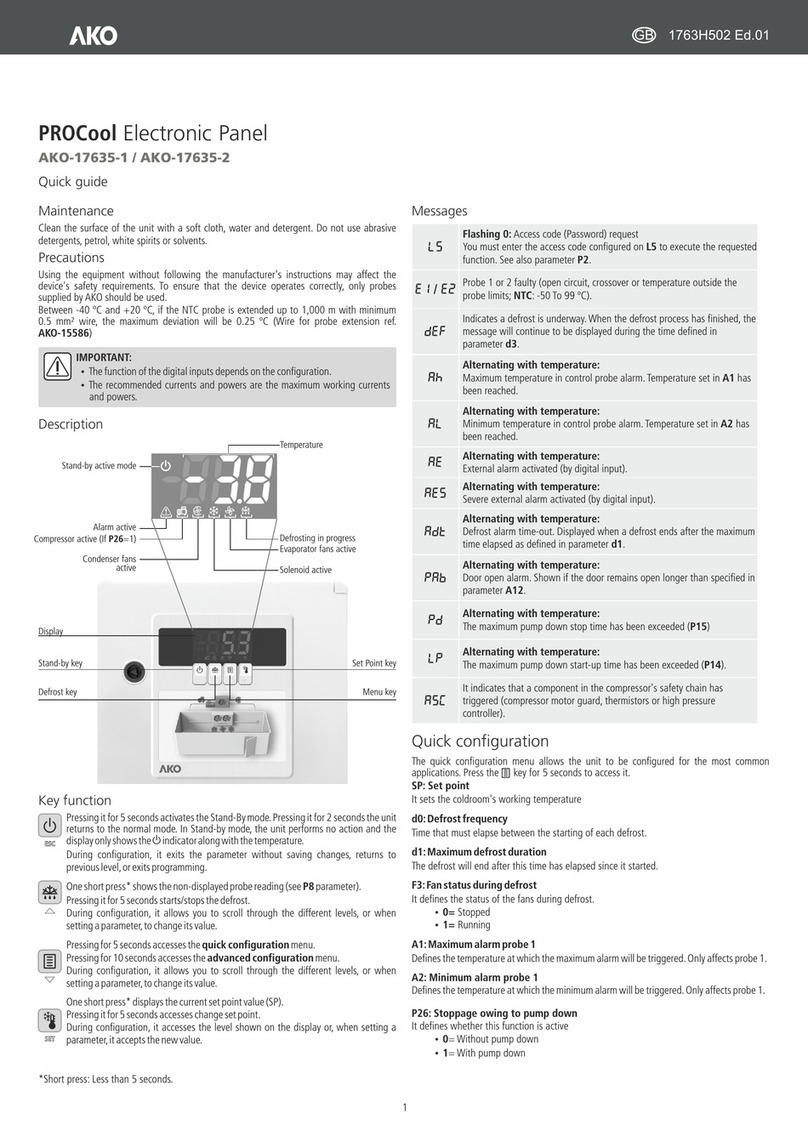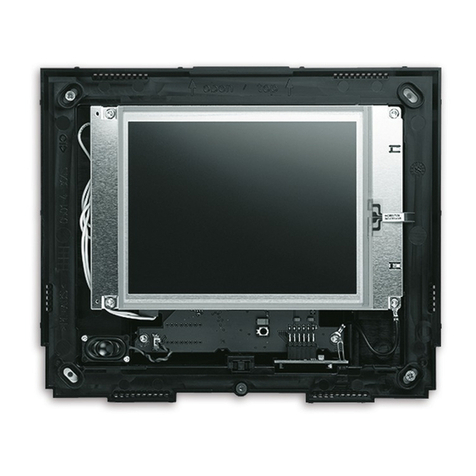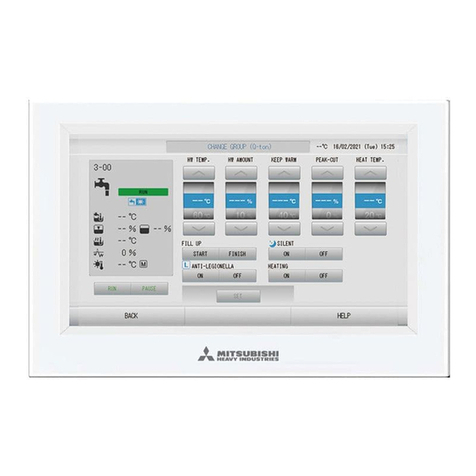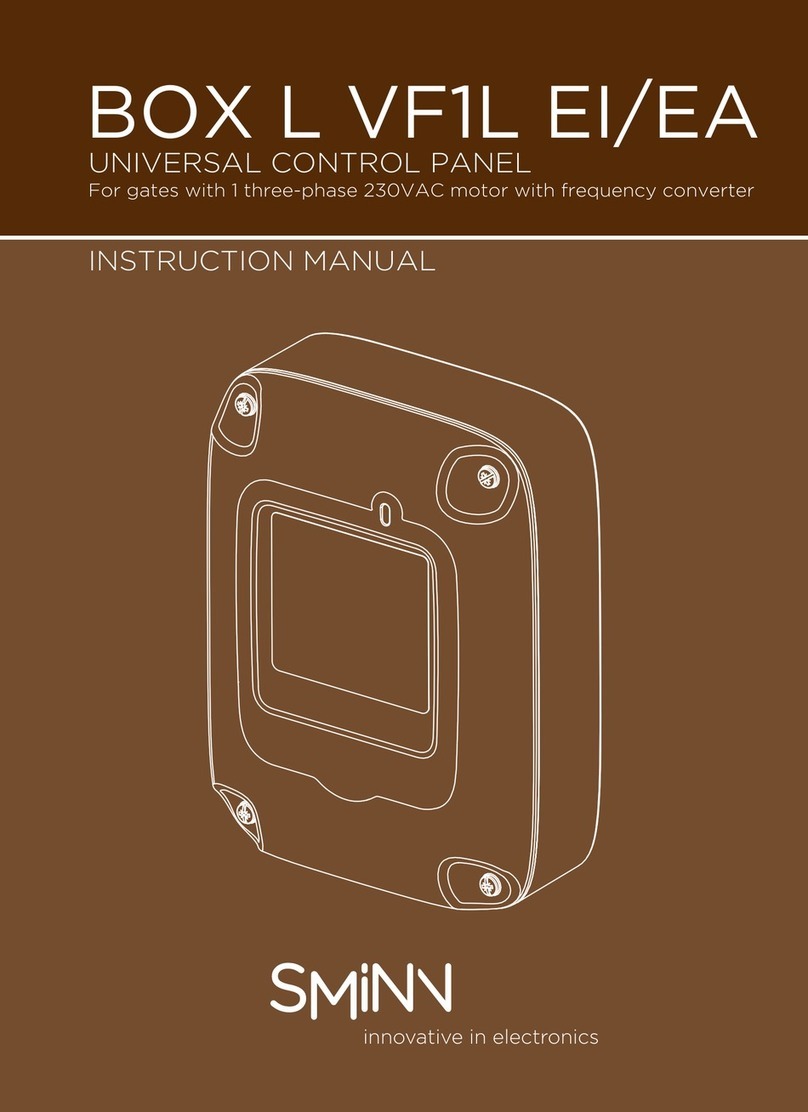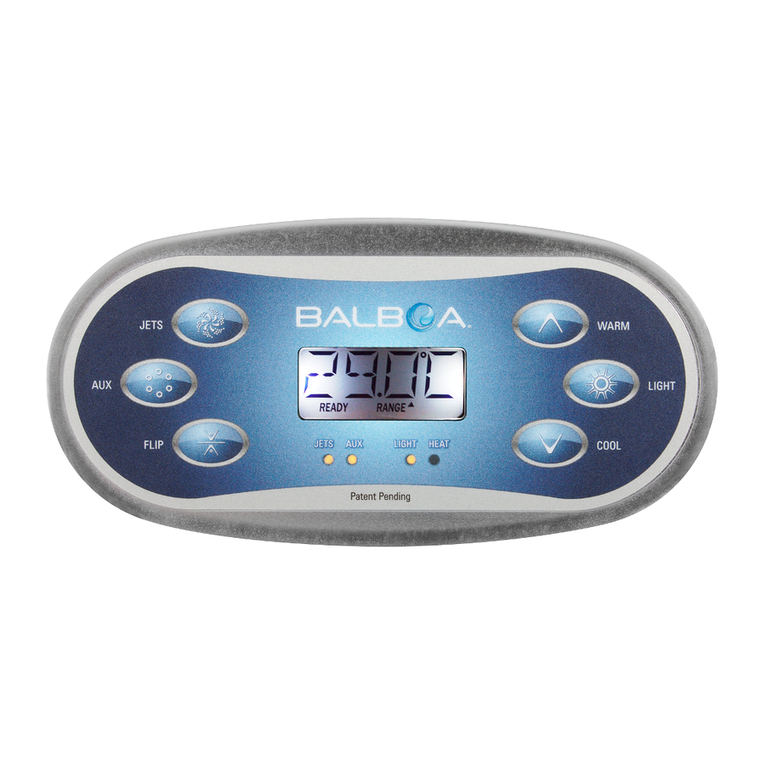
HELIOTERM INVERTER
Doc-0089524 Rev. 4
7
IT
9. Funzionamento in modalità normale 9. Working in normal mode
Parametro n. 1 valore = 0 (tab. 1)
Selez. velocità manuale: Cambia la velocità del
ventilconvettore premendo ripetutamente il pulsante
‘ventola’, (vedi Fig. 4 e 6), secondo la seguente sequenza:
… prima velocità … seconda velocità … terza velocità …
prima velocità …
Parametro n°1 valore = 1 (tab. 1)
Selez. velocità automatica: La velocità del ventilconvettore
cambia automaticamente in base al confronto fra la
temperatura ambiente con quella del set-point. In
funzione della differenza fra questi due valori viene quindi
selezionata automaticamente la prima, seconda o terza
velocità con una distanza fra gli stadi regolabile mediante
il trimmer sul lato del fondo plastico (regolabile fra 0.5°C e
2.0°C), (vedi Fig. 5 e 7).
Parametro n. 2 valore = 0 (tab. 1)
Start-Stop: quando è selezionata questa modalità il
termostato parte sempre dalla condizione di ‘off’ ogni
volta che viene tolta l’alimentazione.
L’utente può quindi accendere il termostato premendo il
pulsante ‘Start/Stop’.
Se viene tolta l’alimentazione per almeno 2 secondi il
termostato si spegne e rimane spento finché non viene
rilasciato il pulsante ‘Start/Stop’.
Parametro n°2 valore = 1 (tab. 1)
On-Off: Quando è selezionata questa modalità il
termostato mantiene, nella sua memoria non-volatile lo
stato (on o off) in modo tale che uno sbalzo di tensione
non modifichi tale stato.
Il pulsante “Start/Stop” mantiene la sua funzione di
inversione tra gli stati.
Parametro n. 3 valore = 0 (tab. 1)
Elettrovalvola termostatata: In questa modalità le
elettrovalvole sono accese o spente in base al confronto
fra la temperatura ambiente con quella del set-point.
Parametro n°3 valore = 1 (tab. 1)
Elettrovalvola non termostatata: In questa modalità
le elettrovalvole sono sempre accese, in base al modo
riscaldamento-raffreddamento selezionato.
Parametro n. 4 valore = 0 (tab. 1)
Motore termostatato: in questa modalità il motore si m
accende o spegne in base al confronto fra la temperatura
ambiente con quella del set-point.
Parametro n°4 valore = 1 (tab. 1)
Motore non termostatato: in questa modalità il motore
è sempre acceso, in base al modo riscaldamento-
raffreddamento selezionato.
Parameter n.1, Value = 0 (tab. 1)
Manual speed set: The motor fan speed change is
made manually by repeatedly pressing the button ‘fan’
(leftmost), (see Fig.. 4 and 6).
Repeatedly pressing the button ‘fan’ results in cycling
between the three speeds according to the following
sequence: … first speed … second speed … third speed
first speed …
Parameter n.1, Value = 1 (tab. 1)
Automatic speed set: The motor fan speed change is made
automatically by the thermostat comparing the current
room temperature with the current set-point.
According to the difference between these two values the
first, second or third speed is then automatically set with a
distance between stages as adjusted on the side trimmer
(adjustable between 0.5°C and 2.0°C), (see Fig. 5 and 7).
Parameter n.2, Value = 0 (tab. 1)
Start-Stop: when this mode is selected the thermostat
always starts from ‘off’ when power is applied.
The user can then turn the thermostat on by pressing the
‘on-off’ button.
When power is removed for at least 2 seconds the
thermostat turns off and remains in this state until the
‘on-off’ button is depressed.
Parameter n. 2, Value = 1 (tab. 1)
On-Off (1): when this mode is selected the thermostat
keeps memory in its non-volatile memory of the state (on
or off) so that a lack in power supply does not affect this
state.
The ‘on-off’ button keeps its function of toggling between
the states.
Parameter n.3, Value = 0 (tab. 1)
Electrovalve thermostated: in this mode the electrovalves
are turned on and off according to the comparation
between the set-point temperature and the room
temperature.
Parameter n.3, Value = 1 (tab. 1)
Electrovalve non thermostated: in this mode the
electrovalves are always turned on, according to the
Heating - Cooling mode selected.
Parameter n.4, Value = 0 (tab. 1)
Motor thermostated: in this mode the motor is turned on
and off according to the comparation between the set-
point temperature and the room temperature.
Parameter n.4, Value = 1 (tab. 1)
Motor non thermostated: in this mode the motor is
always turned on, according to the Heating-Cooling mode
selected.
EN

